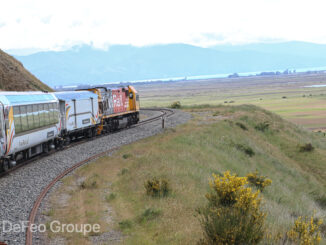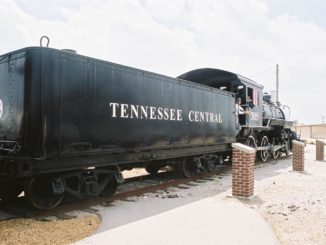
The record as to the precise cause of the 1869 wreck at Budds Creek is somewhat hazy.
The July 28, 1869, wreck on the Memphis, Clarksville & Louisville Railroad left five people, including two railroad employees, dead and more than two dozen injured. The tragedy garnered a considerable number of headlines in newspapers worldwide.
In the immediate aftermath, speculation was rampant, but accounts disagree on details, including the cause, the number of cars on the train and the names of those involved.
However, a few probabilities rise to the top of the list:
- Defective bridge construction caused it to collapse under the weight of the train
- A problem with the train’s rolling stock
- Vandalism
- Recent heavy rains weakened the bridge’s foundations, causing it to collapse
Because there are no records of a thorough investigation, the truth is likely lost to history. It is more than possible a combination of the aforementioned possible causes led to the disaster.
A Cincinnati Correspondent
A few days after the wreck, a correspondent for the Cincinnati Commercial, who coincidently rode over the spot of the crash four days before the tragedy, returned to the scene to inspect it.
“There seems to have been a systematic attempt to conceal the real facts in the case, and to set afloat fictions in their place. The facts seem to show culpability on the part of the directors of the road; the fictions seem intended to throw the responsibility anywhere but where it should rest.”
The writer claimed the bridge’s timbers were “water soaked, split and rotten in many places.” The writer also said the bridge’s timbers were made of poplar, not oak or red pine that was readily available in the area and claimed a “reliable officer of the company” maintained the railroad’s chief engineer previously reported the trestle to be unsafe.
Despite his speculation, the writer seemed unaware of a December 1866, wreck in roughly the same location. Otherwise, the newspaper would have had a vast conspiracy to promote in its pages. Curiously, the writer also indicated the $100,000 of specie — or coins — allegedly on the train was not on board at the time of the crash.
The Conductor’s POV
In a newspaper interview following the wreck, Conductor Lowe felt the train “check up from the reduced pressure of steam as the engine approached the structure over Budd’s Creek.”
Lowe was confident the engineer was not to blame and believed defective timbers were to blame.
However, an inspector checked the bridge a few days before the wreck. Lowe refuted the assertion the train was speeding, saying the train was running its usual 15 miles per hour for that section of track.
An Investigation
In September 1869, F.O. Anderson, an assistant attorney general, had summonses served on several Memphis, Clarksville & Louisville employees, including the railroad’s leadership.
News reports published following the wreck pushed a narrative that some level of nefarious actions played a role in the wreck.
By November 1869, following a “careful and full investigation,” Memphis, Clarksville & Louisville Superintendent Robert Meek and the railroad’s leadership “were entirely exonerated from all blame.”
Because the wreck happened on its line, the Memphis, Clarksville & Louisville was financially liable for damages, which amounted to more than $25,000, including $11,241.91 to passengers who lost their luggage in the disaster.
In 1870, a committee looking into the Memphis, Clarksville & Louisville found defective rolling stock belonging to the Louisville and Nashville was to blame. Perhaps the actual cause of the disaster is likely lost to history.





